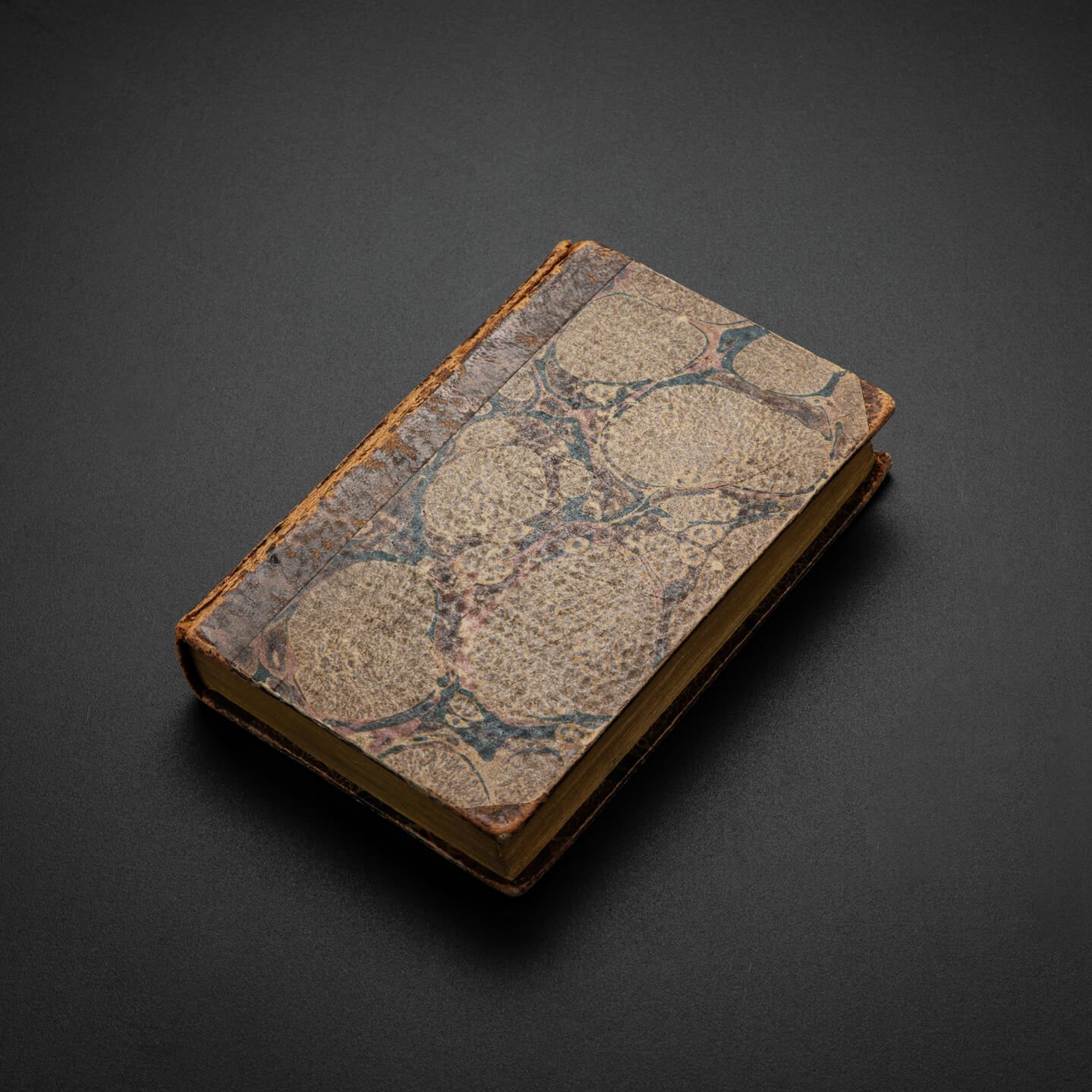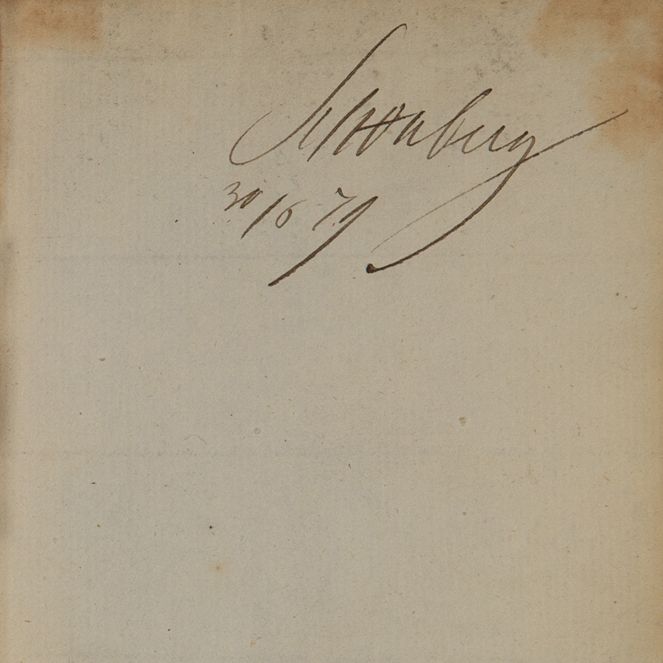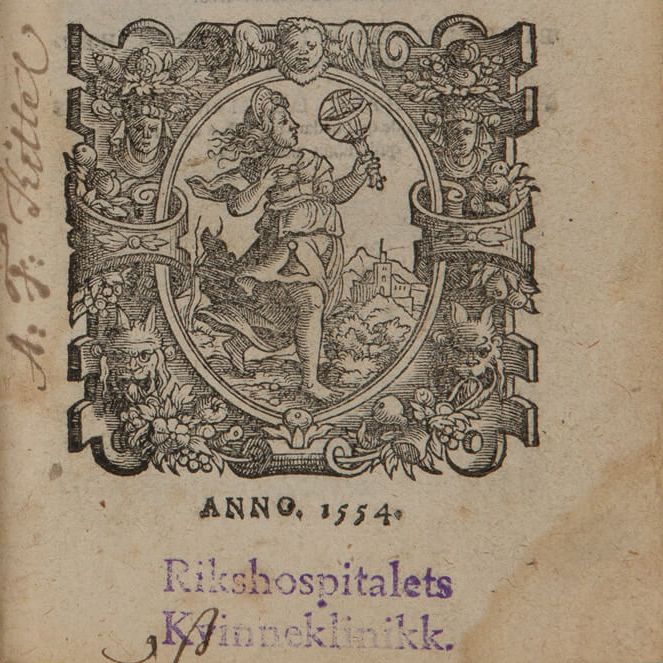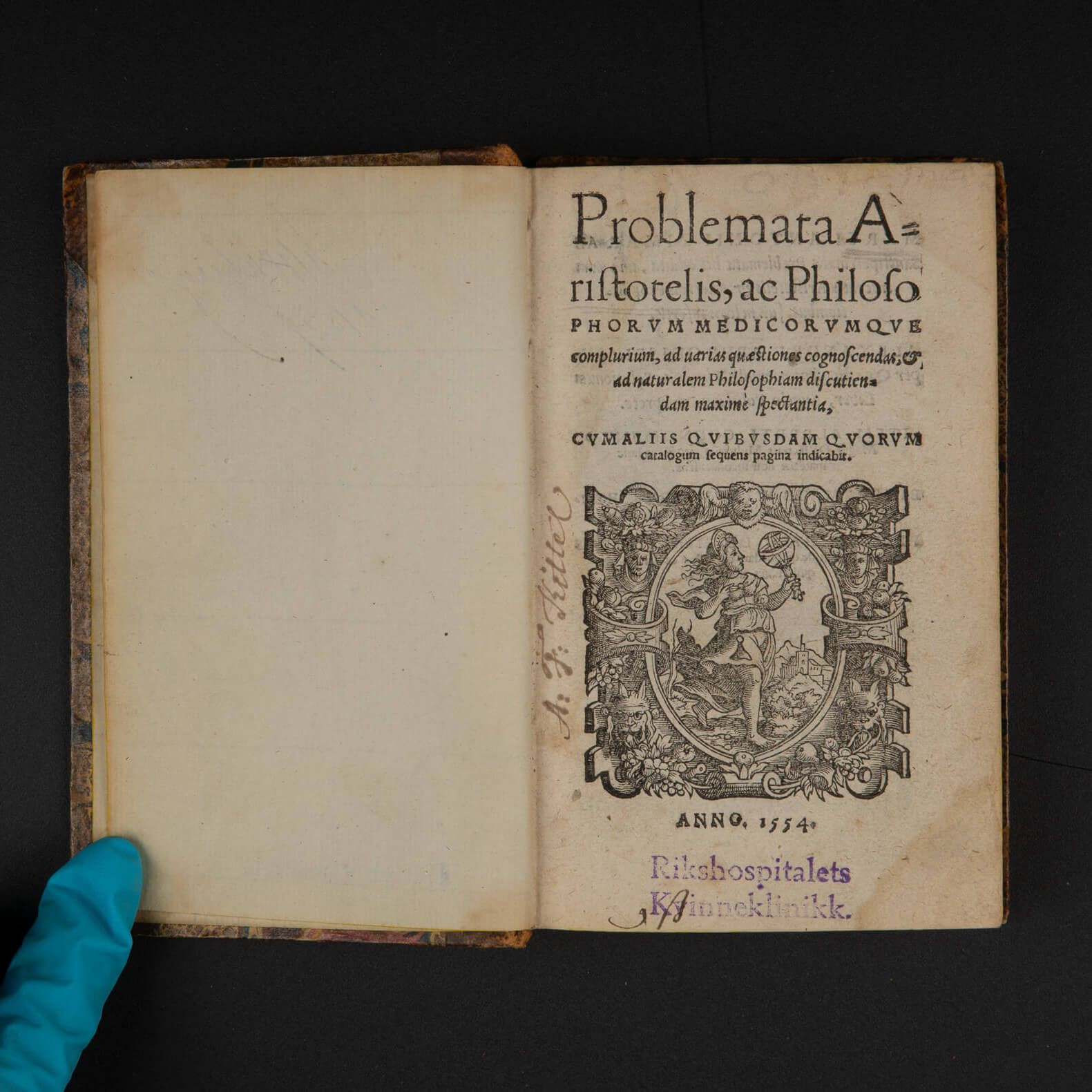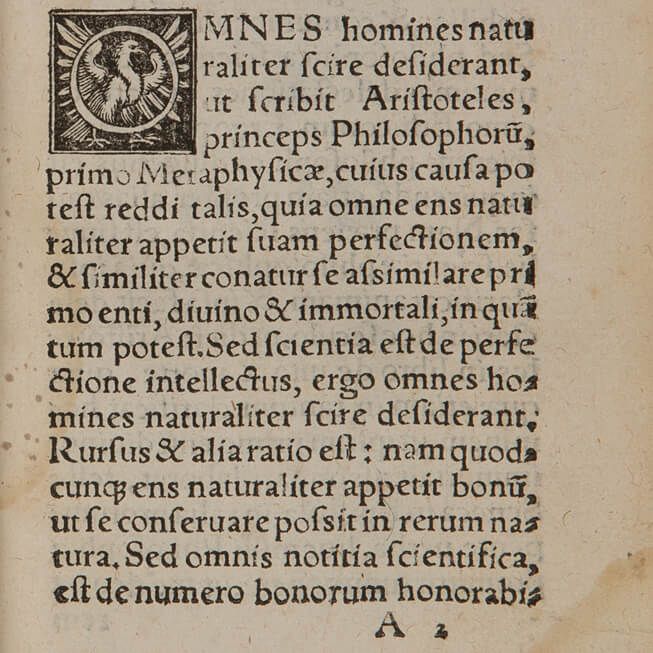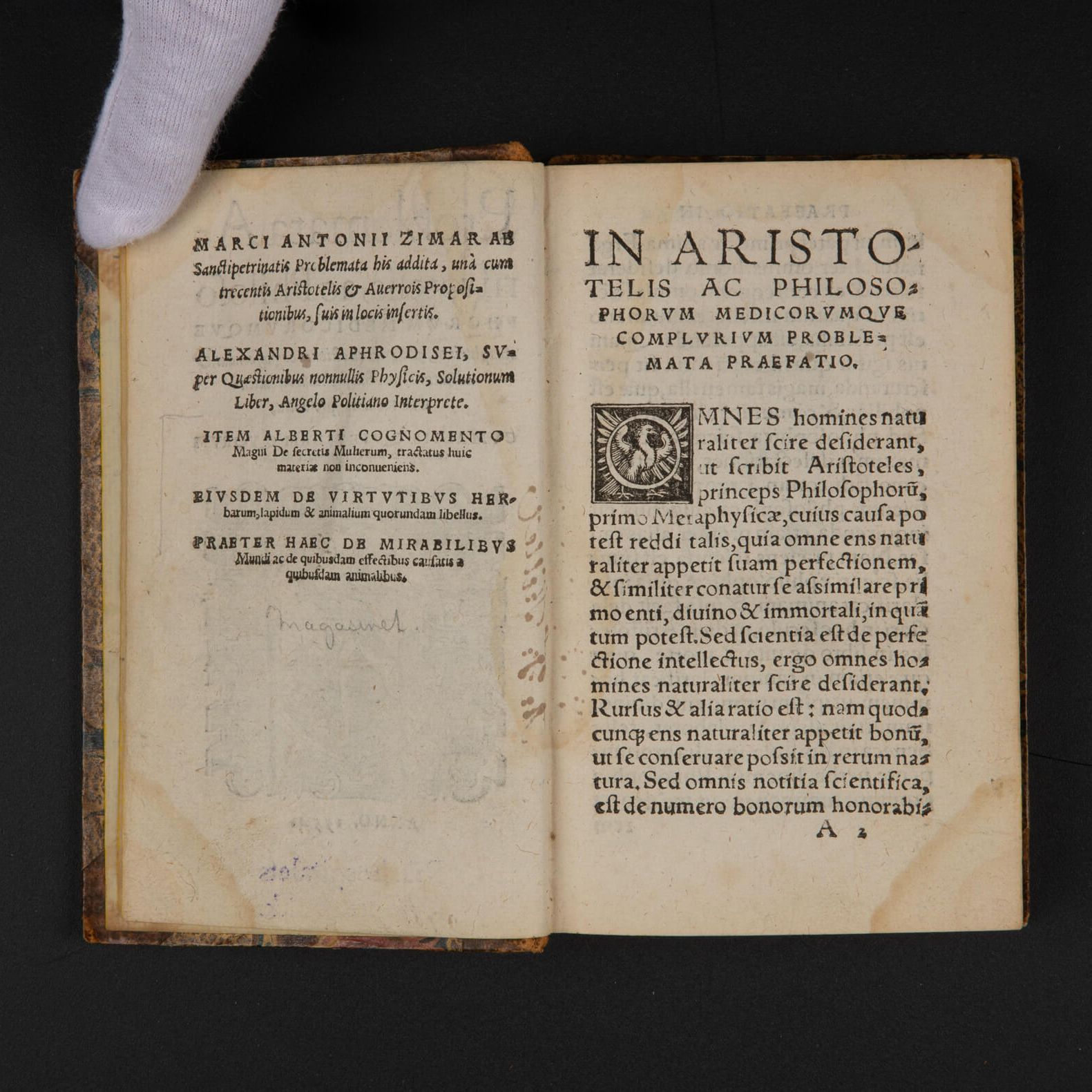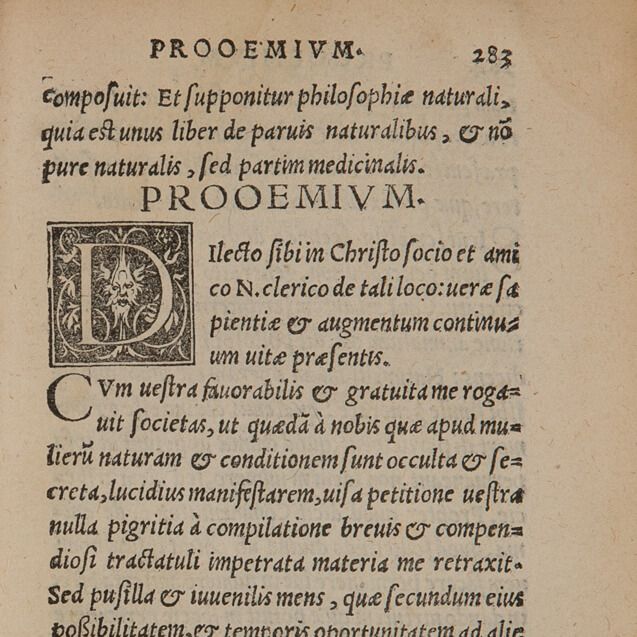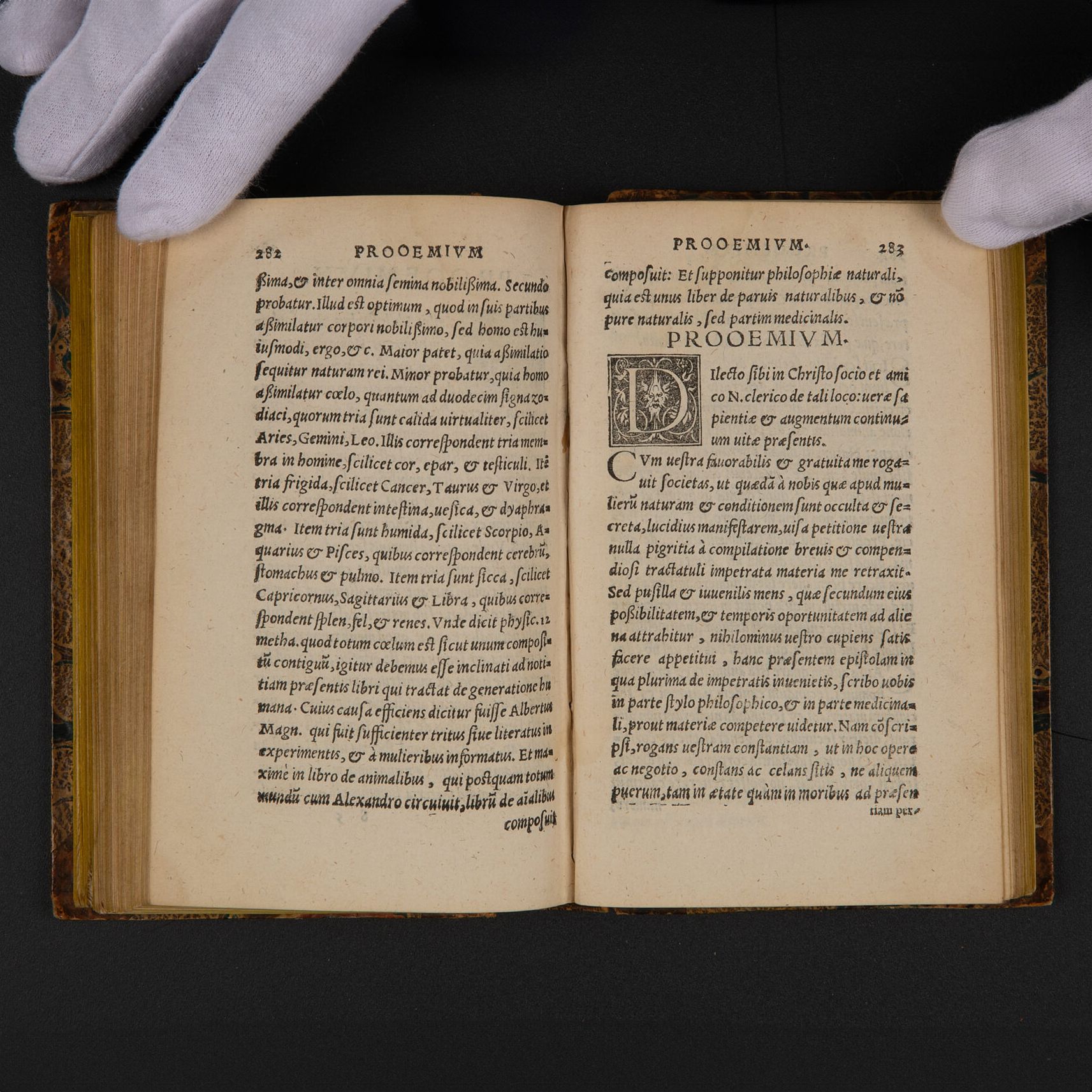Women's secrets
By Anna Fagerheim Julin
The Norwegian Museum of Science and Technology 's library consists of many hidden treasures. Among them we find two books from the 16th century, problemata Aristotelis and Aphorismi hippocratis. How did these almost 500 -year -old books find their way to the museum?
The medical book collection
In 2002, the National Hospital's medical -historical collection was given as a gift to The Norwegian Museum of Science and Technology in connection with the establishment of the National Medical Museum. In this collection there are several older medical books. The old book collection has been created through the initiative of several of the doctors at the National Hospital. Edvard Schønberg (1831-1905) stands for large parts of the older book collection. He was affiliated with the Women's Clinic and the Birth Foundation, and had great interest in medicine history. On the first side of the problemata Aristotelis he has listed his name and the date June 30, 1879, and we can assume this was the date the book came in his possession. In the second book, Aphorismi Hippocratis , we find Carl Wilhelm Boeck (1808-1875) 's signature, dated with the year 1835. He was associated with the skin department at the National Hospital and also stands for a larger part of the old book collection.
Carl Wilhelm Boeck's signature and dating to the right; To the left a former owner's signature from 1603 as well as Schønberg's signature with dating and stamp from the Christiania Birth Foundation.
The fathers of the medicine
The oldest book is aphorismi hippocratis graece et latine, una cum galeni commentarijs: nicolao leoniceno vincentino interpreted . The title means "Hippocrates' aforisms in Greek and Latin, along with the galt's comments, translated by Niccolò Leoniceno Vincentino". An aphorism is a teaching, which expresses a point or a thought. This book was printed in 1547 in Lyon by Guillaume Rouillé, which was a prominent printing of humanistic works in its time. Among other things, he was known for the print of galenic dissertations aimed at medical students and doctors. The book starts with a preface written by Rouillé where he says that this book is very useful for those who have deep interest in medicine. He describes Hippocrates' text as one of the oldest and most outstanding of medical scriptures. Rouillé justifies that they have chosen to print the text with the comments to the madman to make it a greater benefit and understanding of the reader. The book contains an alphabetized index, summaries in the margin and references that the printer has added, which was the standard for learned books.
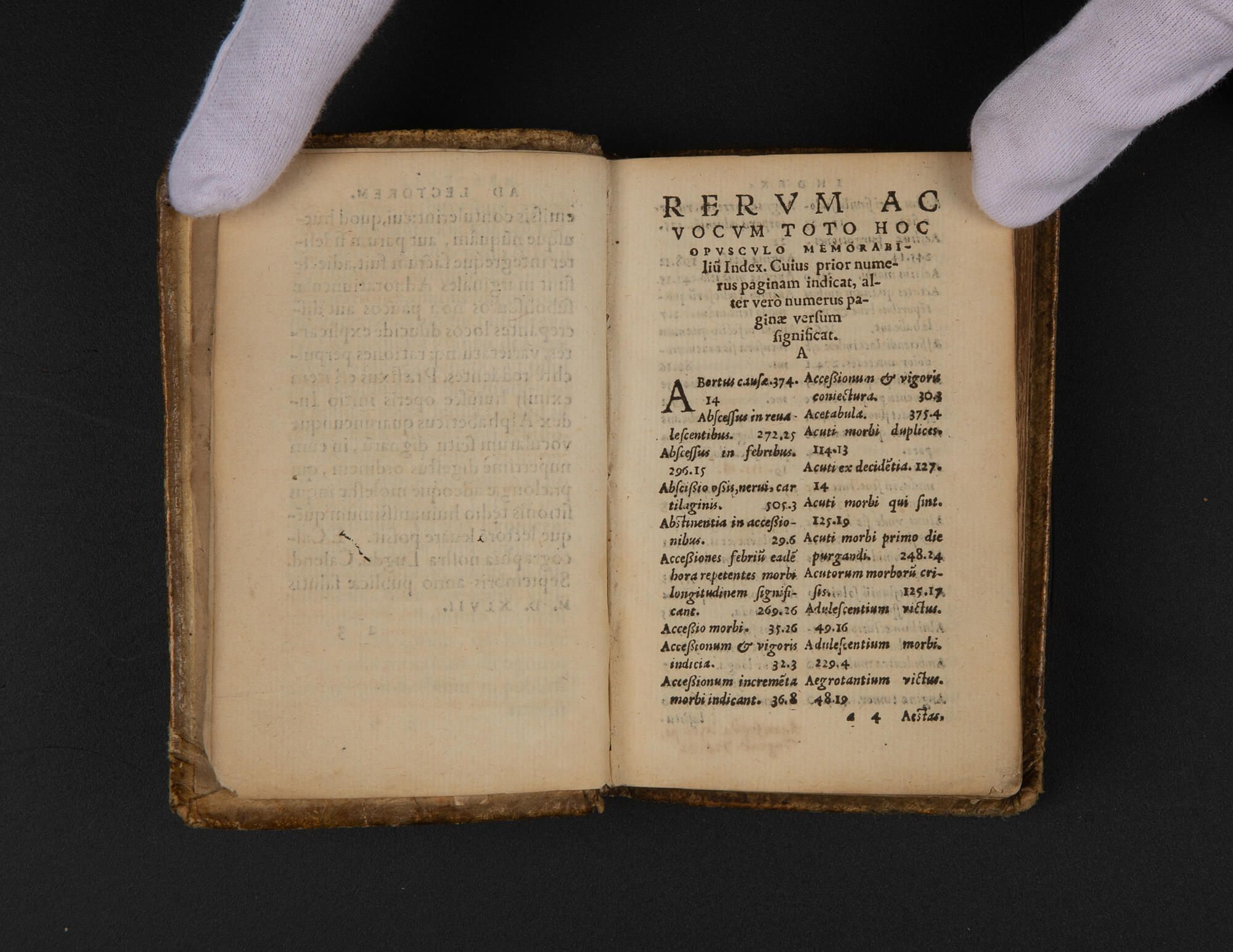
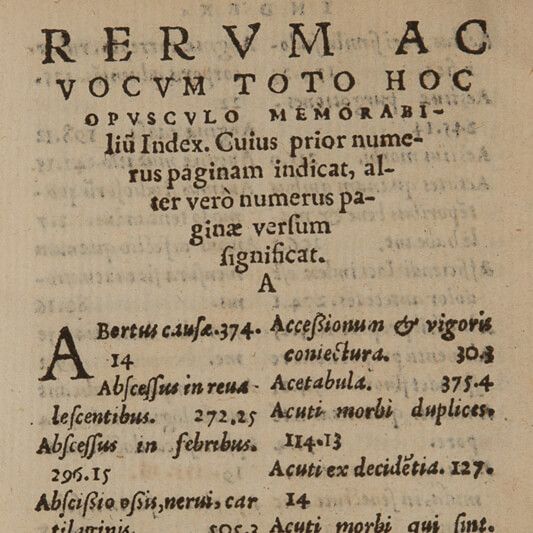
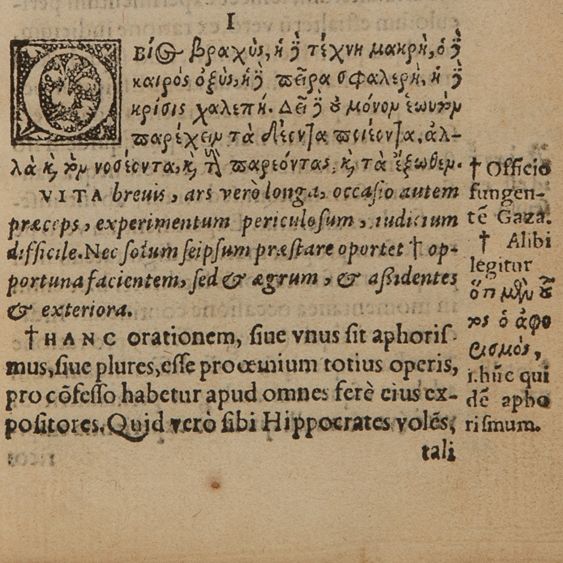
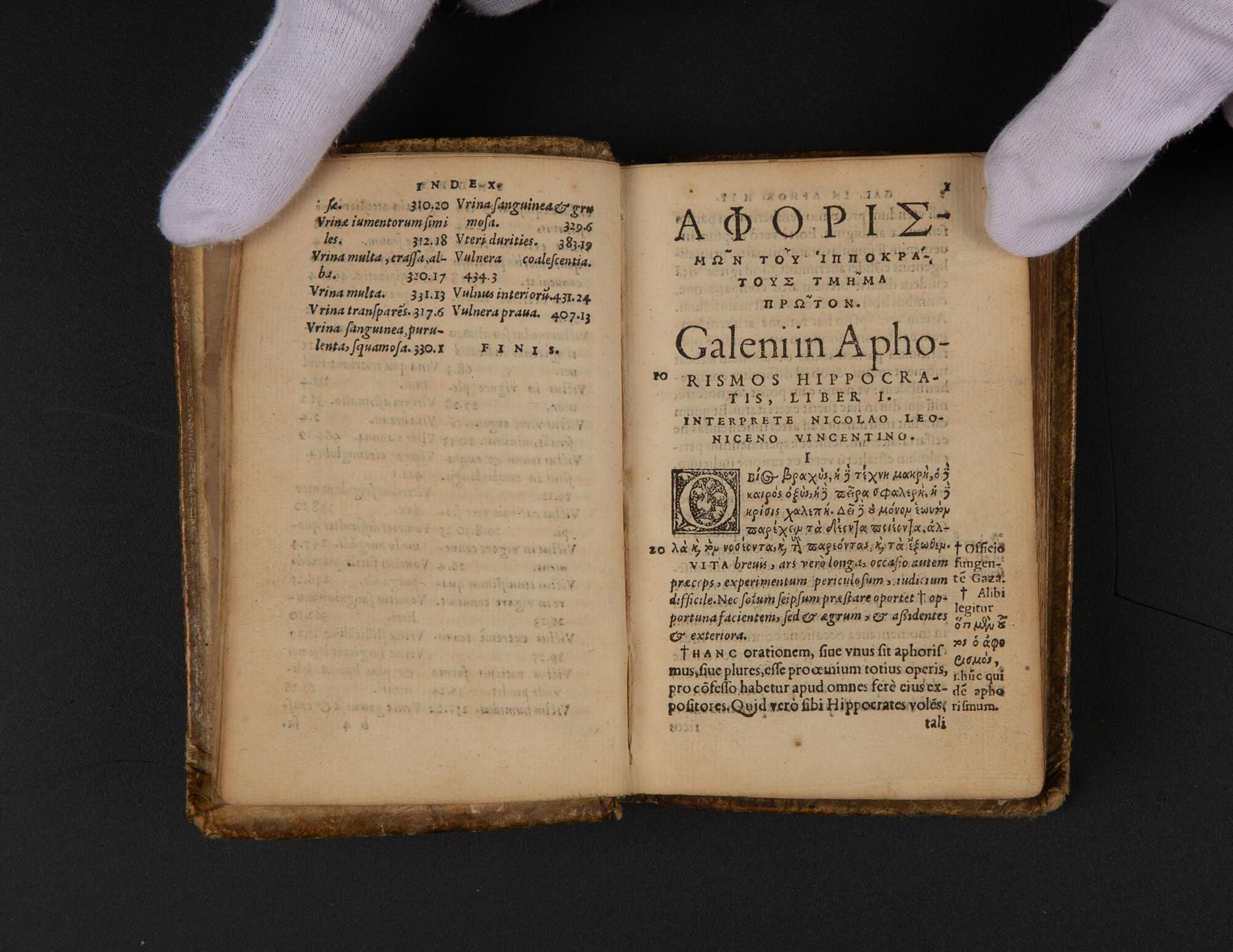
Alphabetized index and first aphorism that starts with the well -known quote "Life is short, the art is long".
The recovery of antique medicine
At the beginning of the 16th century, there were major changes in what was understood as antique medicine, as a result of the rediscovering of several Greek texts on medicine. Galen (c. 129-200 possibly) was a lives in Rome, including for emperor Marcus Aurelius, and had been trained in the medical tradition of Hippocrates, who was referred to as "the father of medical art". After its lifetime, Galen was considered one of the largest authorities in medicine, which was further strengthened in the 1300s with the rediscovering of several of his texts.
The right knowledge of knowledge
The translator of this edition of Aphorismi Hippocratis , Niccolò Leoniceno (1428-1524), was known for good linguistic skills in Greek and Latin. He was a trained doctor and was a professor at the University of Ferrara. By 1492 he had one of the largest, if not the largest, the collection of Greek medical manuscripts. It was based on this that he claimed that all the Latin texts were filled with errors. The Greek texts had a complex transmission process, which led to both misunderstandings and factual errors. It was by going back to the original Galesen Gales that you could clean up the mess and find the actual meaning of the texts, which was especially important as it was thought it was much precious information to be obtained in the ancient texts. Leoniceno claimed that through this, long -term conflicts could be solved in the medical field, cure new diseases and find cures for diseases that had previously been incurable. After Leoniceno's disclosure of the errors came many new translations of the Greek texts. The average of editions published between 1526-1561 were 12 books a year, and in 1547 21 editions were printed. The years before and after 1526 and 1561, on average, 2-4 books were printed a year.
Hippocrates' aforisms
Hippocrates' Aforismer was a standard introductory text in the medical study at most universities, and it was common to read works that commented on it even though it was not part of the syllabus. Galens comments on Hippocrates' Aforisms provide explanations for these. This practice, with short texts explained through comments, became common in the medicine in the late 1000s.
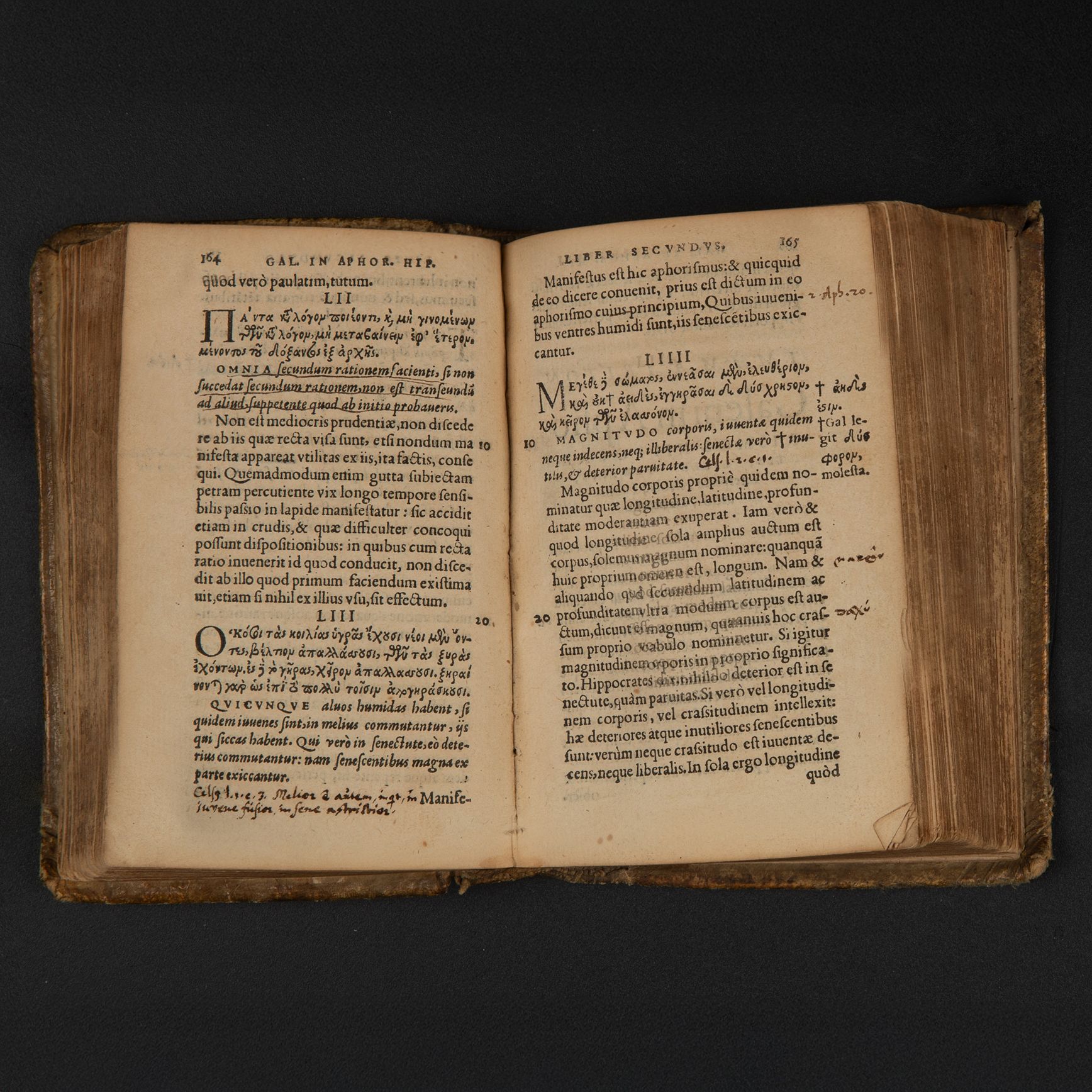
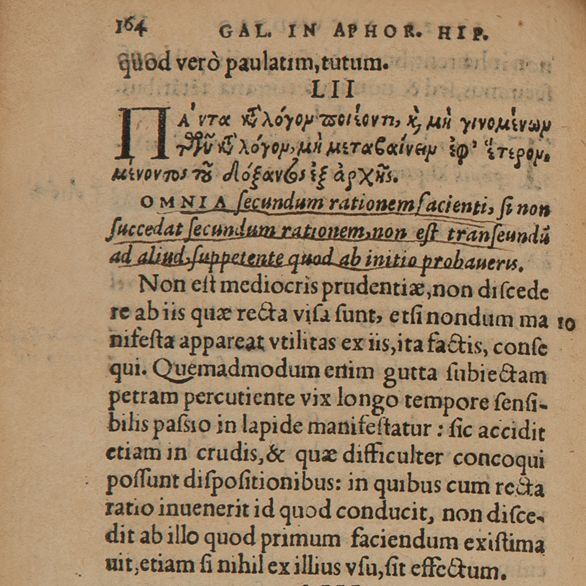

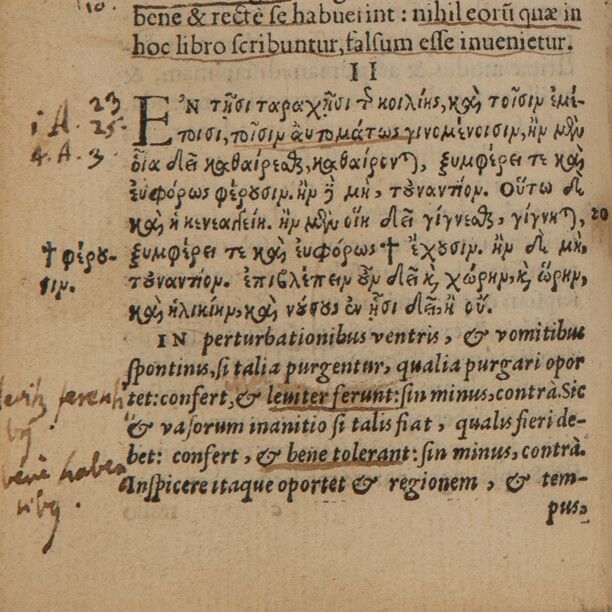
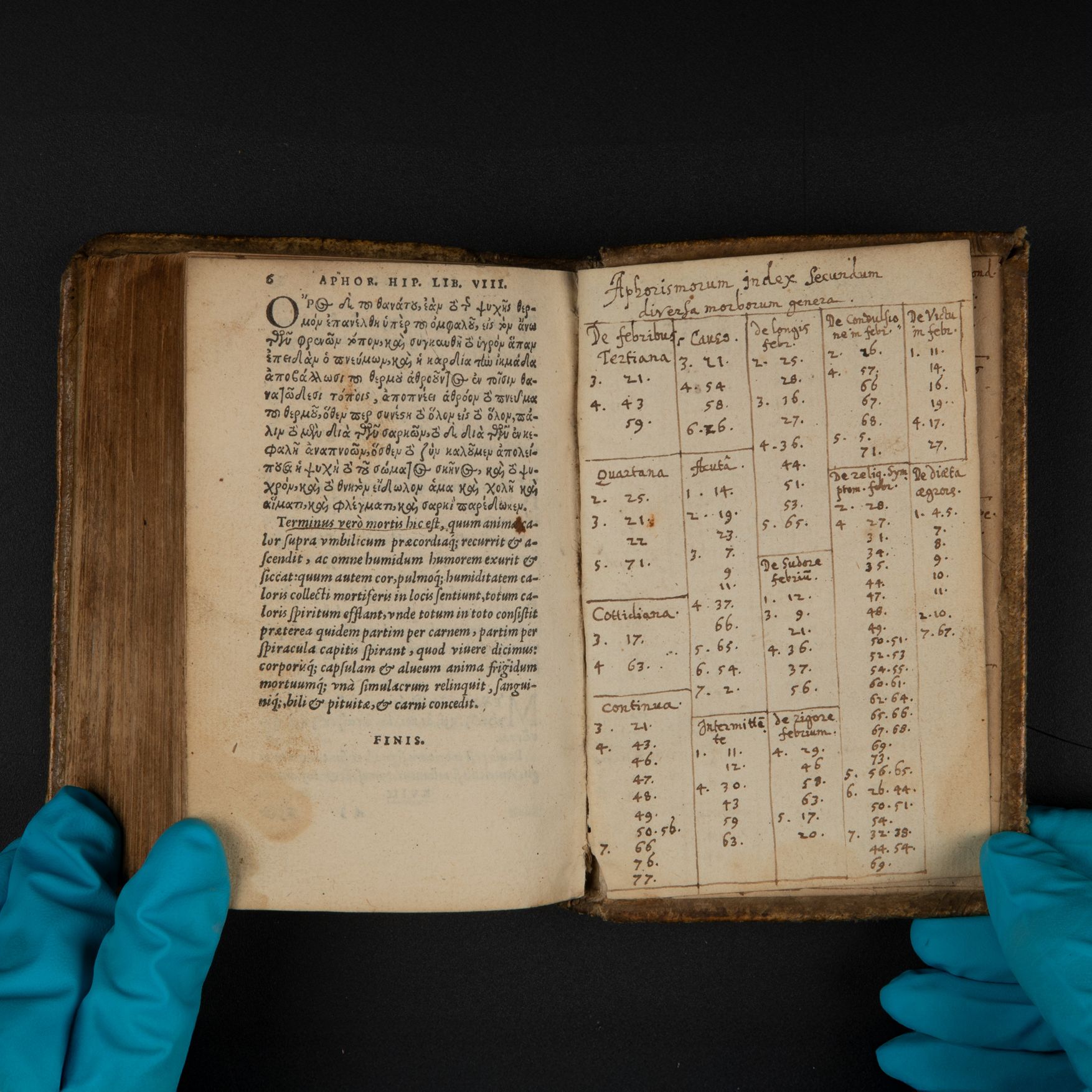
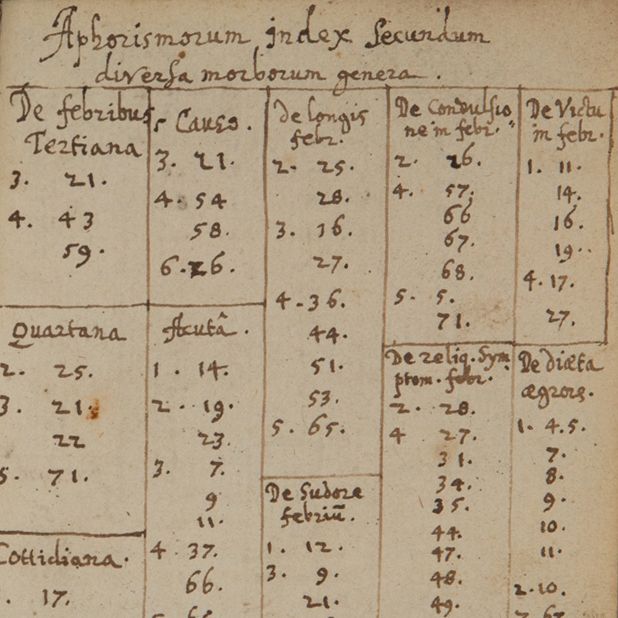
Listings in the margin from a former owner and the handwritten index at the back of the book.
As mentioned earlier, the book is aimed at those with medical interest, and one can see that a former owner of this book has written notes in the margins. Such a listing was a common reading technique among scholars in early modern times, and also shows that the book owner did this to return to the book later to use it as a reference. Especially the index written by hand at the back of the book refers to extensive and time -consuming work, which shows the usefulness of the book has had for the owner.
Frontispis.
Aristotle's question
The full title Problemata Aristotelis, AC Philosophorum Medicorumque Complurium, Ad Varias Quaosstiones Cognoscendas, An AD Naturalem Philosophiam Discutiendam Maxime Maxime Spectantia, Cumaliis QuibusDam Quorum Quorum Cataloges Sequenc from , Philosophers and doctors, who apply to various questions to get to know, and who mainly relate to the discussion of natural philosophy, with others who the catalog on the next page will show. "
A more suitable translation will be "questions" instead of "problems". This is because the genre of this book, called problem data, consisted of questions and answers on causes of natural -philosophical phenomena and especially medical knowledge. Both learned science and popular science were conveyed in a clear and concise way in this genre, and it gave readers of all kinds an understanding of everyday phenomena and natural -philosophical funfacts. Questions were never asked about the fact presented, because it was believed to be so well known that it was not needed to be explained. And the answer only discussed the cause of the fact. In other words, the genre was not used to generate new knowledge.
A fraudulent writer?
Although the title was "Problems from Aristotle", Aristotle had not written this text himself. The use of "Aristotle" in the title follows a medieval tradition, where respected philosophers were named to associate the text with them and thus invoke the authority of the philosopher. This was a way to advertise that the text was based on authoritative explanations and was credible. The popular version was based on this understanding, which is seen in the preface to the text, where Aristotle is mentioned several times to justify the curiosity of natural and everyday phenomena. This justification was also done in the hope of escaping condemnation for what was considered unseemly curiosity. In the text itself, well -known philosophers were also mentioned to make the explanations convincing.
The two problemata Aristotelis
Interestingly, there were two different texts that circulated under the short title problemata Aristotelis. One text can be referred to as a learned version, and it was written sometime in the 400-500s based on an actual Aristotelian core. The other can be called a popular version, because it has a more popular science content and was read by people of all walks of life. It was written by an anonymous author between the 13th and 1300s in what is today Germany. These two different versions had little to do with each other. The similarity is about both title and genre being the same, and both books contained texts from other thinkers.
One thing that clearly separates these two different works from each other is the preface: The Popular version's preliminary words are "Omnes Homine's naturaliter scire decider ..." which means "all people naturally want to know ...". These initial words were continued in the vast majority of translations of this book, also in our book. The book we have was printed in 1554 in Frankfurt.
The overview of the other texts included in the book and the preface to the problemata Aristotelis with "Omnes Homines" opening.
The popular version
The popular version was undoubtedly the most read version, with around 20 medieval manuscripts and over 100 printed editions from the early modern times (c. 1450 to 1790) in the original language Latin and in translations into German, French, and English. It uses the classic problem data form to discuss mainly medical topics, but also other everyday things that were often not included in other philosophical works. It is both shorter and cheaper than the learned version. The structure of the popular version follows a thematic division after the body, from head to organs. After this follows questions that address human reproduction, and the text ends with questions about various natural phenomena. One of the main focuses of the text is human reproduction and there are questions about everything from conception to birth, and about gender differences.
A former owner's interests
A previous owner of this book seems to have been particularly interested in reproduction, as a larger part of the listings made in the book has to do with this. An example do you see the question "Why are women sometimes pregnant with twins?" is being set.
The answer tells that according to Galen, there are seven cells and recipients in the uterus, and it is possible that children can be generated in three different forms, depending on how many cells the semen has fallen into and divided into. Three of the cells are found on the right side, and there can be three boys being found on the left side, where three girls can be conceived. But there is a cell in the middle, where the ancient ones say that a hermaphrodite can be conceived. Furthermore, the answer says that it would be miraculous rather than natural if a woman gave birth more than seven children.
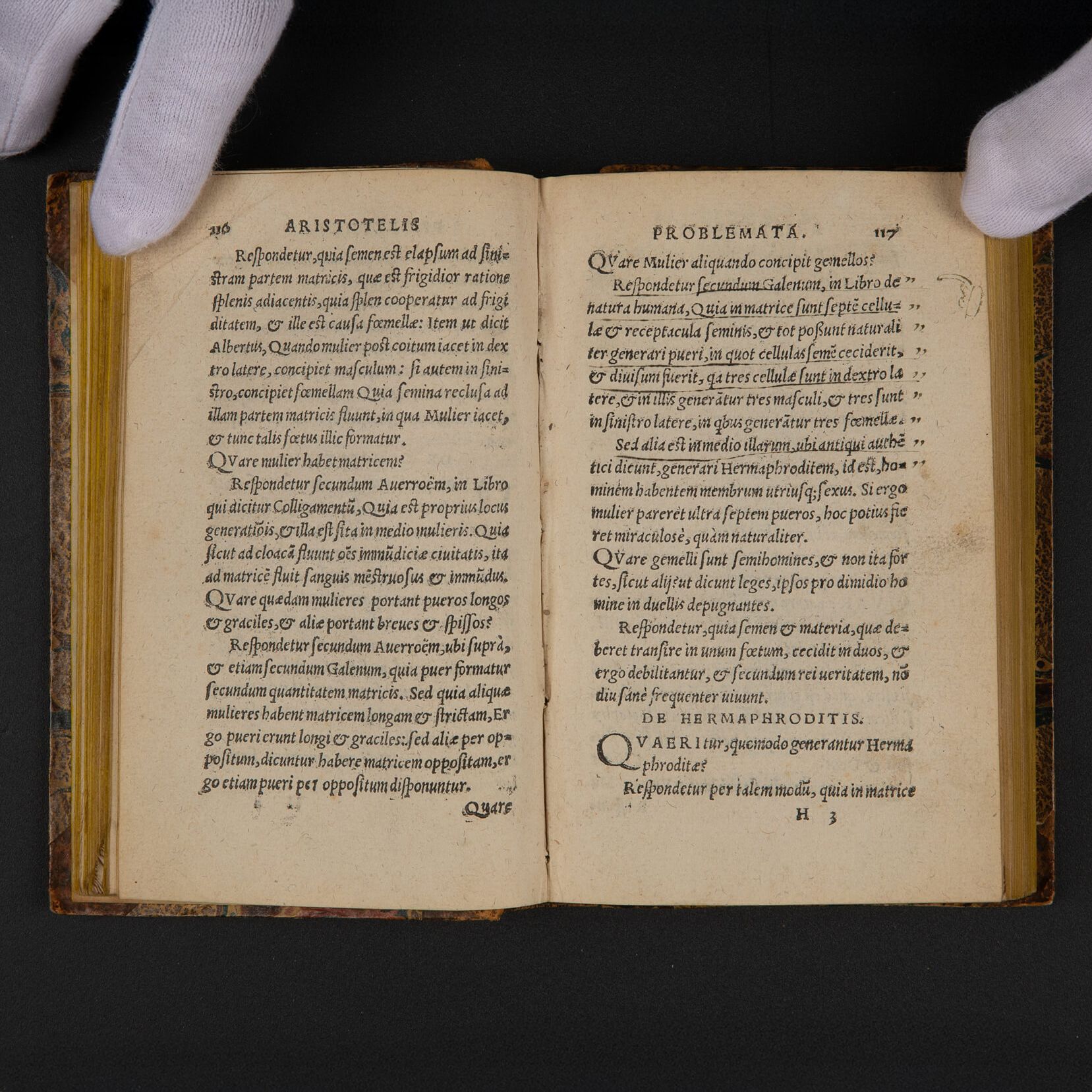
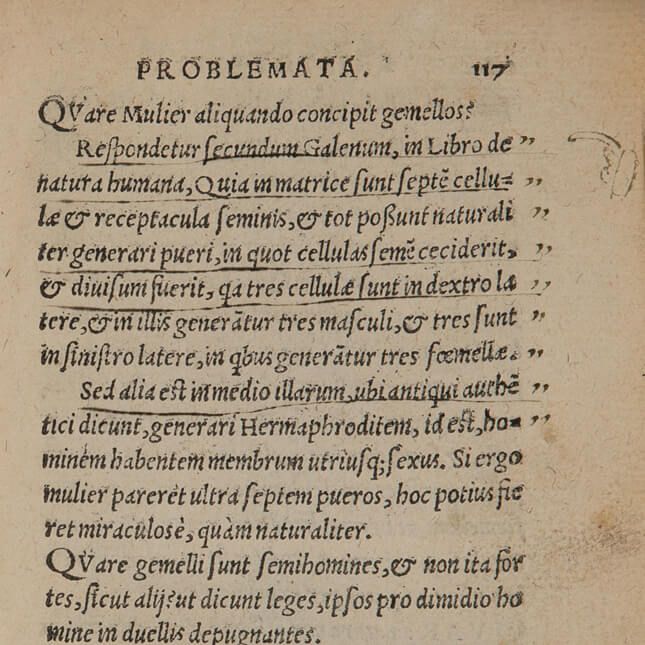
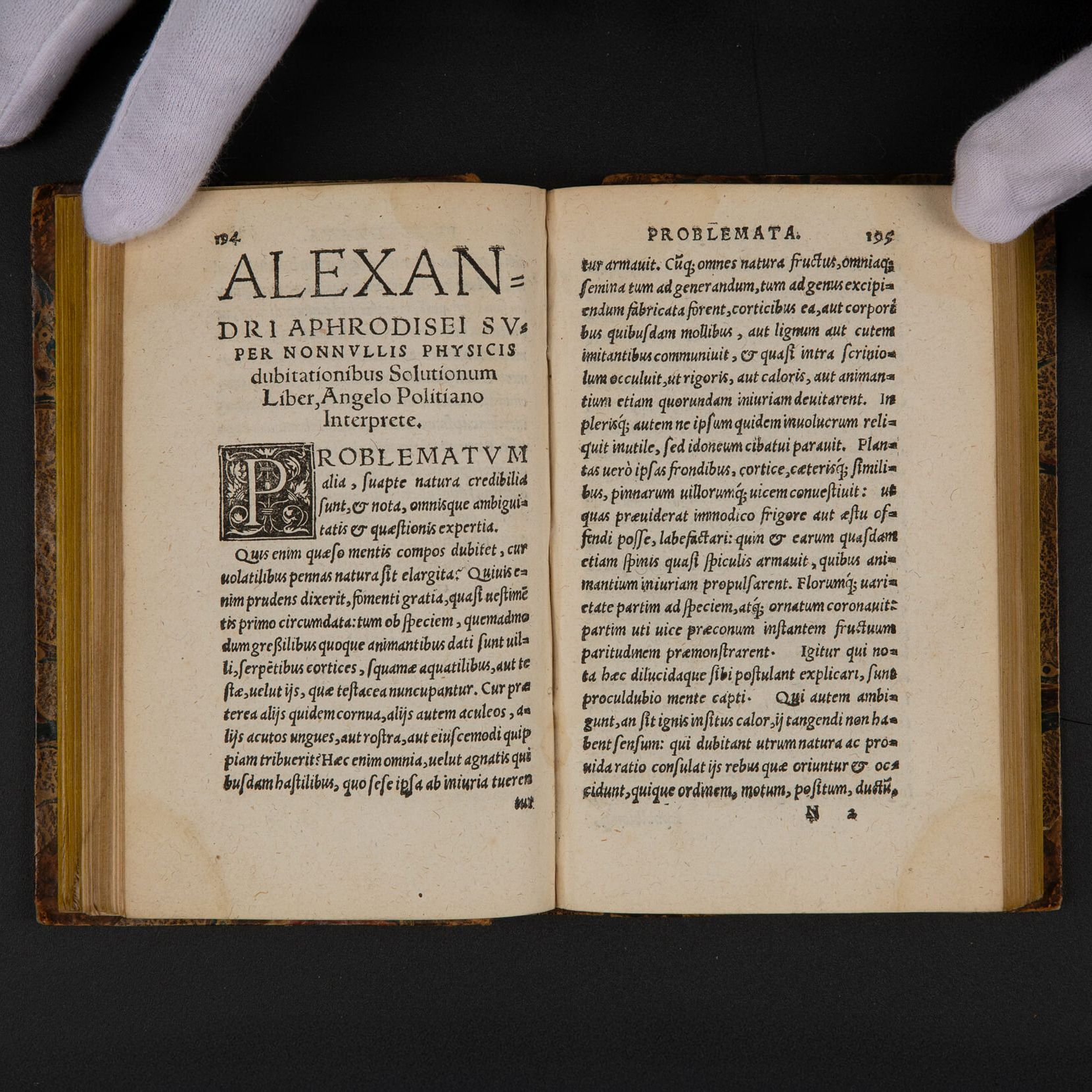
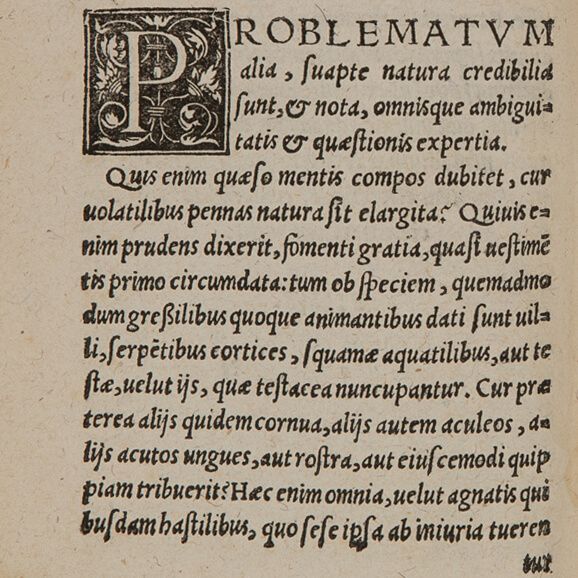
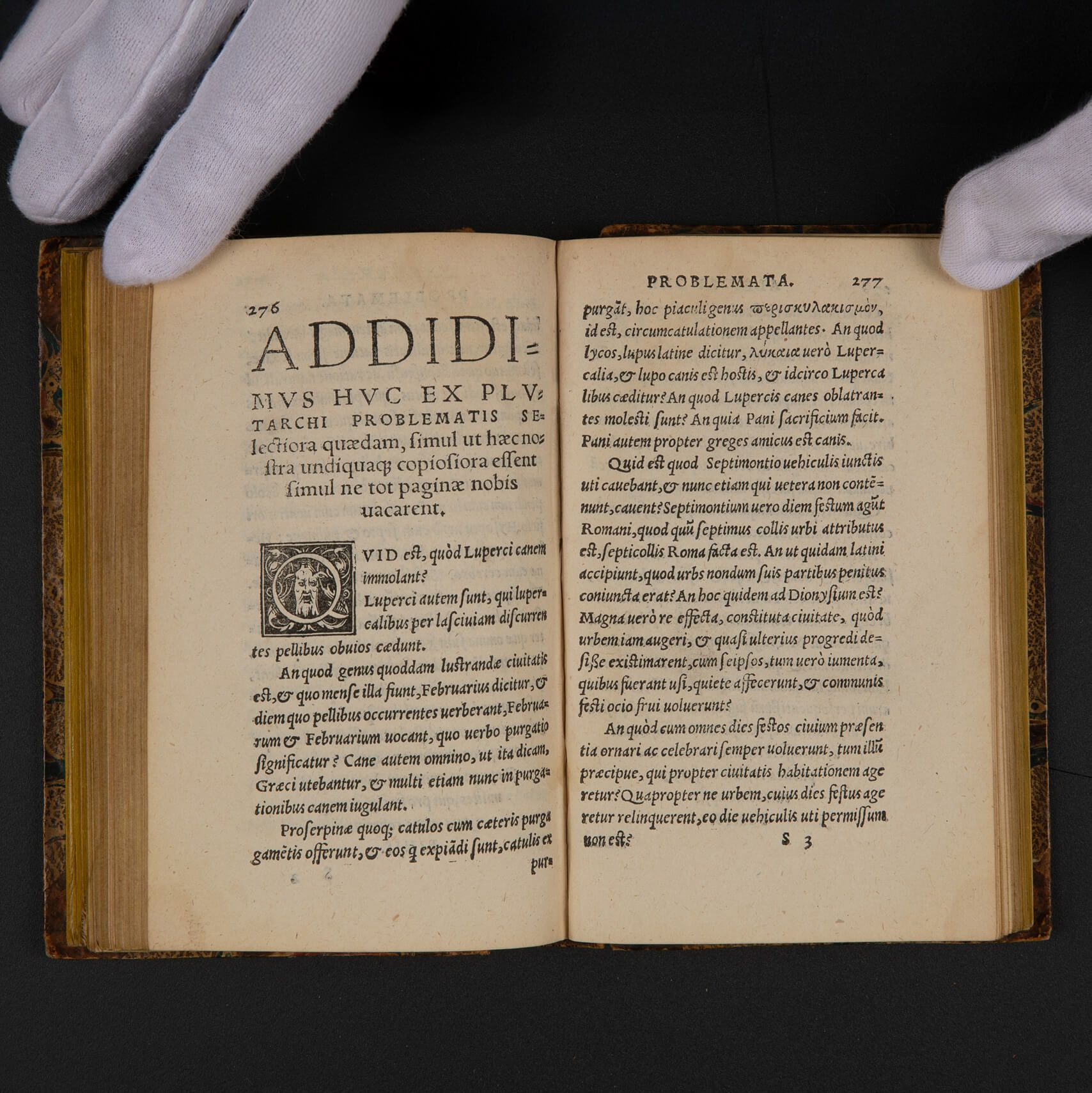

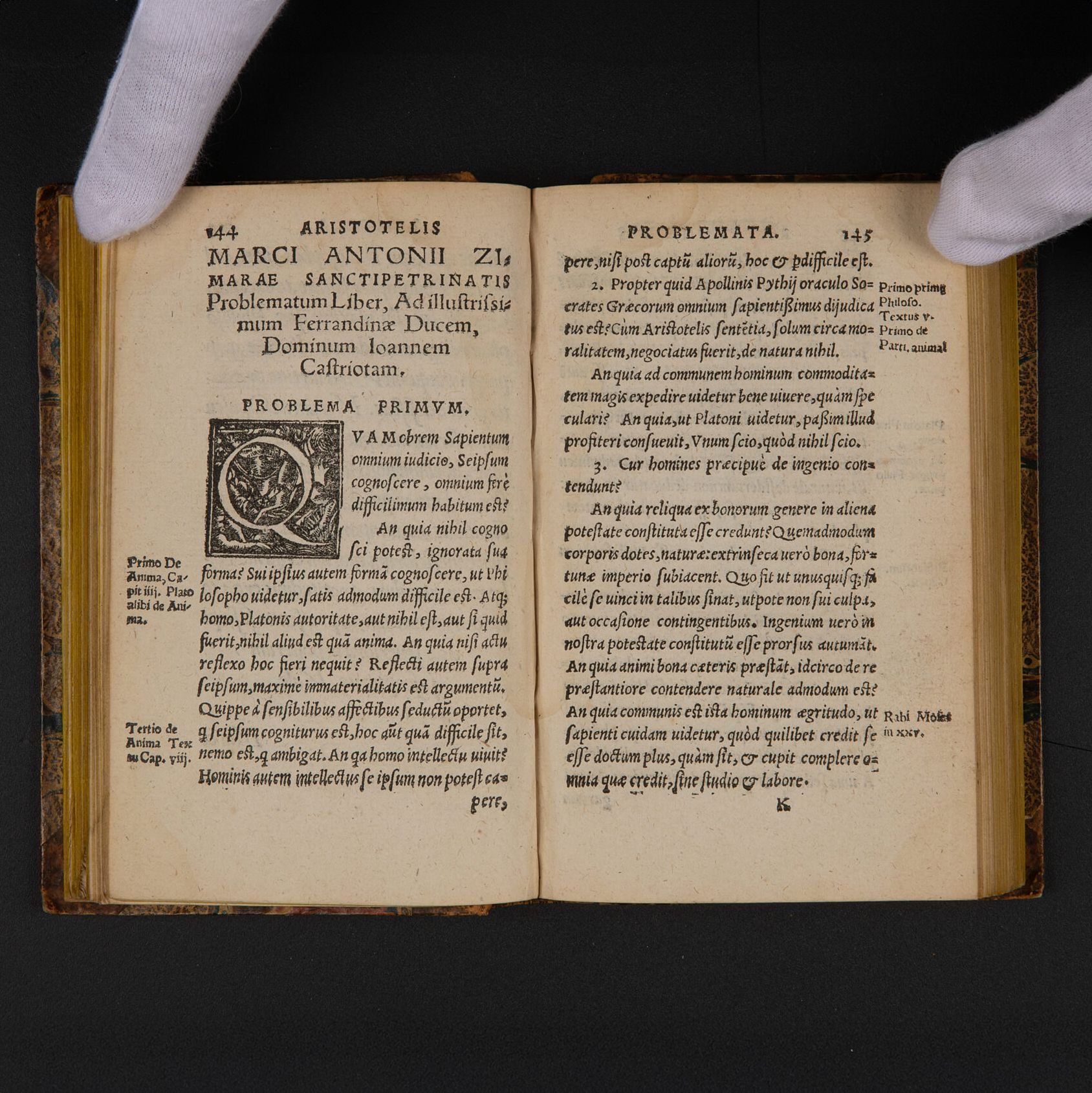
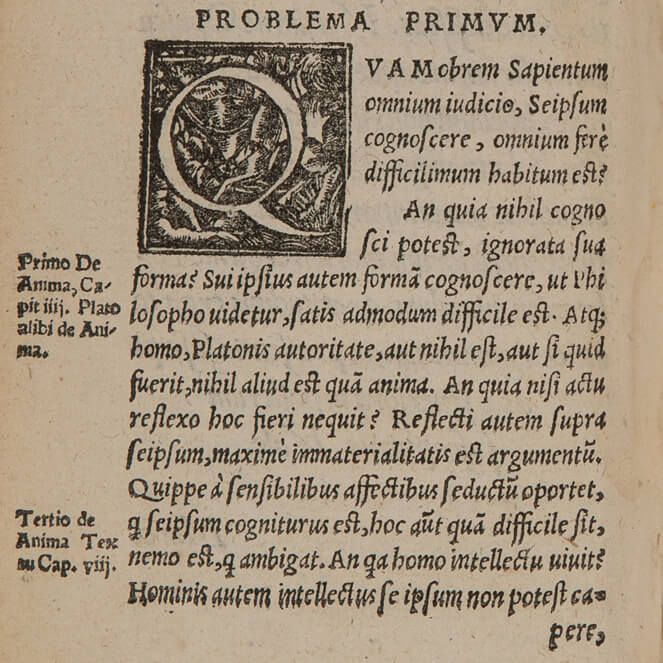
The underlining made by a former owner and first page in Aleksander from Aphrodisias, Plutark and Marcantonio Zimara.
The other texts
There were other texts included in the book. Texts from the Greek philosophers Alexander from Aphrodisias (about 200-300 possibly) and plutark (about 45-125 possibly) were almost always included in all editions. A fun thing about Plutark's part is that the headline tells that his text is inserted to fill up empty pages, which was continued even in editions where this was not the case.
It was not only texts from ancient times that were included in problemata Aristotelis, but also more modern texts. Marcantonio Zimara (c. 1470-1537) is the modern representative in our edition. He was a philosopher taught at several universities in Italy, and was especially known for his comments on Aristotle's lyrics.
The preface to the Secretis Mulierum, where the author addresses a medium.
Monker's curiosity about women
There was a lot of attention about human reproduction in this book. From the 1510s, it became a tradition to link problem data Aristotelis with other texts that also addressed this. Albertus Magnus (c. 1200-1280) was represented with three texts in our edition. He was a German Dominican monk and known as one of the greatest philosophers of the Middle Ages. One text, the Secretis Mulierum , was one of the most popular texts written about female biology, and was added to the book in the 1540s.
The title means "about women's secrets" and was written between the 1200-1300s and dealt with everything around human reproduction. Although attributed to Albertus Magnus, it was most likely one of his students who had written it. The preface in this text approached a medium. The author wrote that knowledge about reproduction was hidden by women, and therefore needed to be examined by men. This was necessary knowledge to know, both to help a woman if she was sick and so that the monks could know which fines were appropriate to give to a woman for the sins she acknowledged under scripture. It is not known if this text was actually used in medical practice, or whether it was only to satisfy the curiosity of the monks on women's biology.
* The translations were made by author with the help of GPT-4 Omni.
Blair, Ann. "Authorship in the Popular" Problemata Aristotelis ". Early Science and Medicine, 4, No. 3 (1999): 189-227.
Blair, Ann. "The Problemata as a Natural Philosophical Genre" in Natural Particulars: Nature and the Disciplines in Renaissance Europe, edited by Anthony Grafton and Nancy Siraisi, 171-204. Cambridge, Mass: MIT Press, 1999.
Lochrie, karma. Covert Operations: The Medieval Uses of Secrecy. Philadelphia: University of Pennsylvania Press, 1999.
Nutton, Vivian. Renaissance Medicine: A Short History of European Medicine in the Sixteenth Century. London: Routhedge, 2022.


